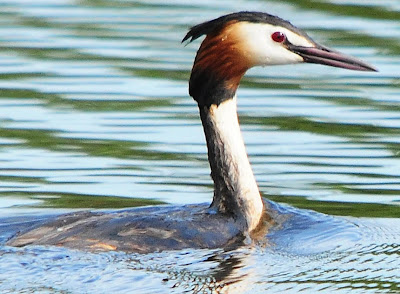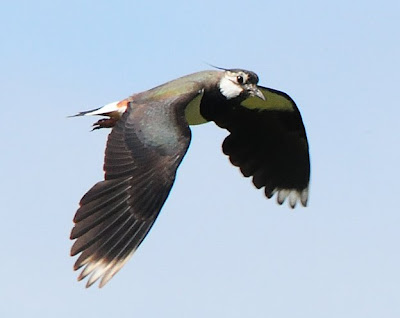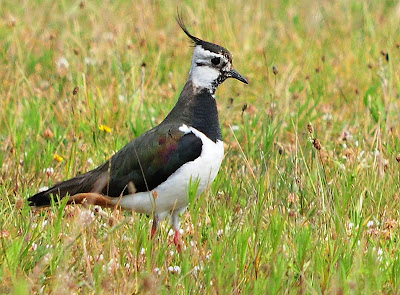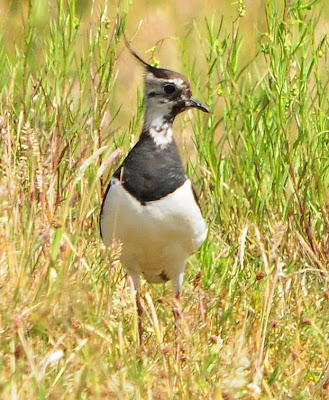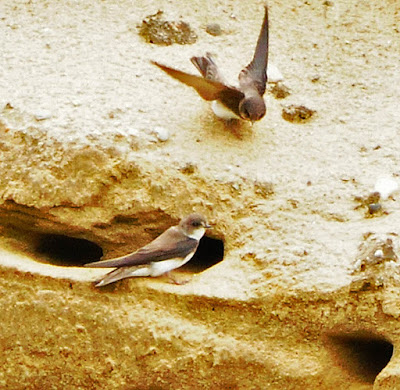
I made a quick trip to Surry yesterday to follow up on Lance Tanino's post to the NHBIRD list where he had seen a colony of bank swallows in a sand quarry on Joslin Rd. I had brought my dog along for some exercise. When I first got out of the car, I saw many swallows whirling overhead but none approached the nesting cavities within the bank. Eventually it became clear to me that even though we were a distance away that we were still within their flight distance. We got back into the car from which I had a good view of the bank. After a couple of minute's wait they started dipping in and out of their nests.
I made some photos but it was a bit of a stretch even for my 500 mm telephoto lens.
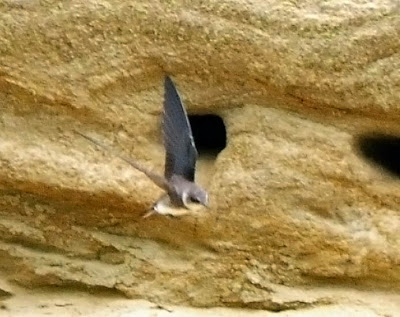
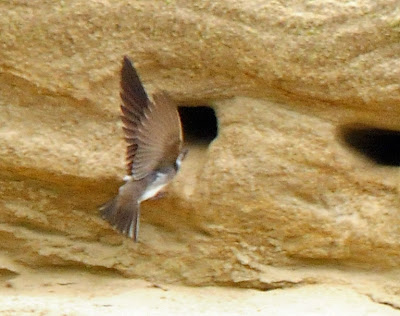
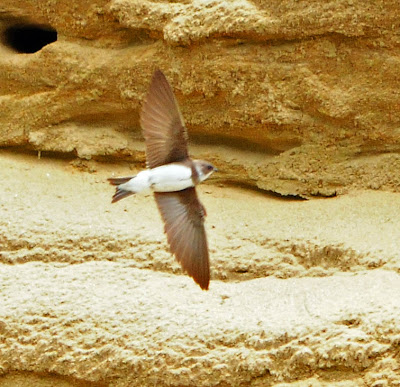
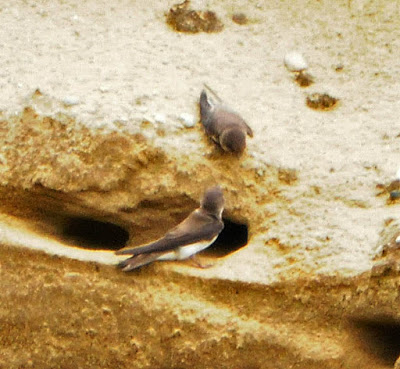
I had looked for bank swallows before and following a tip by Cliff Seifer. I had gone to an area on the CT River, just downstream from and opposite the Vernon Dam. There was nice bank but no swallows and no nesting cavities. According to Pete Dunne's Essential Field Guide Companion on bank swallows "Because of the mercurial nature of Bank Swallow's nesting habitat, established colonies may disappear..." I guess this it what had happened here.
I remember watching bank swallows, called Ufer (=bank) Schwalbe, when growing up in a small village in post-war Germany; I used to wonder how the birds tunneled into a sand bank, but never actually observed them working at it. In middle Europe because of population growth, the swallow has been losing habitat and active breeding colonies are rare. In the States it is classified as a Species of Least Concern.

